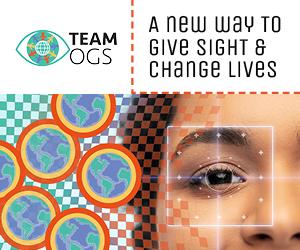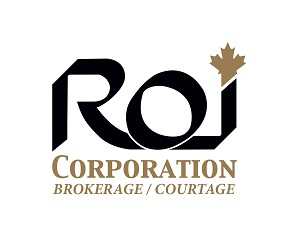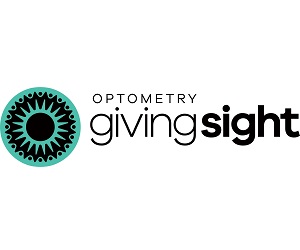
Let’s talk about the key reasons why addressing clinic conflicts is essential:
- Workplace Morale and Productivity: Unresolved conflicts can create tense and aggressive work settings, negatively impacting employee morale and productivity. By addressing conflicts promptly, organizations can maintain a positive work environment and ensure optimal productivity.
- Staff Turnover and Absenteeism: Prolonged conflicts among employees can lead to increased staff turnover and absenteeism. When employees face constant conflicts, they may seek employment elsewhere, resulting in talent loss for the clinic. Resolving conflicts can help retain valuable employees and reduce absenteeism.
- Legal Implications: Office conflicts left unaddressed can escalate and lead to legal problems for the practice. Harassment or discrimination claims can arise from unresolved conflicts, resulting in costly legal battles. Proactively resolving conflicts can help prevent such legal implications.

- Work Performance: Workplace conflicts can significantly impact work performance. Employees experiencing conflicts may feel stressed, anxious, and unmotivated, leading to poor work performance. By addressing conflicts and fostering a supportive work environment, organizations can enhance employee well-being and productivity.
- Toxic Clinic Culture: Frequent conflicts among employees can contribute to a toxic Clinic culture. Disagreements and unresolved conflicts can create a negative work environment, affecting employee satisfaction and overall clinic culture. Addressing conflicts promotes a positive and inclusive clinic culture.
- Negligence and Patient Experience: When employees spend excessive time and energy on arguments and conflicts, their focus on their duties may diminish. This negligence can result in decreased patient satisfaction and a negative impact on the clinic’s reputation. Resolving conflicts allows employees to focus on delivering exceptional patient experiences.
Identifying the Causes of Clinic Conflicts
To effectively address and prevent clinic conflicts, it is crucial to understand their underlying causes. Let’s explore some common causes of clinic conflicts:
- Unclarified Job Roles and Poor Responsibility Distribution
Unclear job roles and responsibilities can lead to confusion and conflicts within the practice. When employees do not have a clear understanding of their roles, misunderstandings and disputes can arise. Additionally, when unofficial supervisory roles are assigned without proper communication, jealousy and resentment can increase.
- Lack of Opportunities
A lack of growth opportunities within a clinic can contribute to clinic conflicts. When employees perceive a stagnant work environment or observe colleagues receiving promotions while they feel left out, tensions can arise. It is crucial for clinic to provide equal growth opportunities and communicate transparently about career advancement.
- Unhappy Employees and Poor Work Environment
Unhappy employees and a negative work environment can be significant contributors to clinic conflicts. Poor communication, assumptions about personalities, and a lack of trust among colleagues can lead to conflicts. Practice’s should prioritize fostering a positive work environment and encourage employees to resolve their differences in a timely manner.

- Personality Differences
Personality clashes can be a common cause of workplace conflicts. When individuals respond to challenging situations in unproductive ways, disagreements can escalate. It is essential for employees to develop emotional intelligence and respect each other’s differences to minimize conflicts.
-
Unrealistic Expectations
Overloading employees with excessive workloads or setting unrealistic expectations can contribute to clinic conflicts. When employees feel overwhelmed or unable to fulfill their responsibilities, conflicts may arise. Practices should strive to strike a balance between workload and employee capacity to prevent conflicts.
- Unclear Company Policies
Clear and transparent company policies are essential for avoiding conflicts. When employees are uncertain about procedures or perceive a lack of fairness in policy implementation, conflicts can arise. Practices should ensure that policies are well-communicated, understood, and consistently enforced to minimize conflicts.
- Unresolved Harassment Issues
Unresolved harassment issues can lead to clinic conflicts. If employees are experiencing conflicts with colleagues and the root cause is not addressed, aggression and tensions can escalate. Practices should have proper channels for reporting and addressing harassment issues promptly.
- Lack of Promotions
Perceived biases in promotions can contribute to clinic conflicts. When employees feel that they are not being appreciated or that promotion decisions are unfair, resentment can arise. Practices should implement fair and transparent performance evaluation systems to minimize conflicts related to promotions.

Solutions for Resolving Workplace Conflicts
Resolving workplace conflicts requires proactive intervention and effective communication. Here are some solutions that can help address and resolve conflicts in your clinic:
- Focus on the Future
When resolving conflicts, emphasize the importance of moving forward and finding solutions rather than dwelling on past grievances. Encourage employees to develop a proactive mindset and work towards a positive future.
- Establish Strong Company Guidelines
Establish clear guidelines on how employees should handle conflicts and seek resolution before involving management. Encourage employees to address conflicts among themselves, promoting a culture of personal responsibility and accountability.
- Provide Conflict Resolution Training
Invest in conflict resolution training for employees and leaders. Equipping them with the necessary skills to navigate conflicts effectively can significantly reduce clinic conflicts.

The overall key to creating a supportive and conflict-free clinic culture depends on the level of emotional intelligence your team has to properly implement these solutions.
To create a supportive and conflict-free workplace culture, clinics must prioritize increasing the emotional intelligence amongst the entire team to build stronger relationships that can weather challenges. By providing your team with training, you will reap the benefits of a team that can self manage their own conflicts and arguments without turning them into something bigger.
Remember, workplace conflicts are inevitable, but they can be effectively managed and resolved with the right solutions in place. By understanding the causes of conflicts and implementing the appropriate resolution techniques, clinics can create a positive and productive work environment for their employees.
For resources on Conflict and Argument Management visit www.emotionalintelligenceconsultinginc.com

Jade Bodzasy
Jade Bodzasy, Founder of Emotional Intelligence Consulting Inc., is a dedicated Coach and Consultant for Optometric Practices. Her extensive background includes over 20,000 hours of expertise focused on customer relations, work structure refinement, training method development, and fostering improved work culture within Optometric practices.
Certified in Rational Emotive Behavior Techniques (REBT), Jade possesses a unique skillset that empowers individuals to gain profound insights into the origins of their behaviors, as well as those of others. Leveraging her certification, she equips optometry practices with invaluable resources and expert guidance to establish and sustain a positive, healthful, and productive work environment.



















